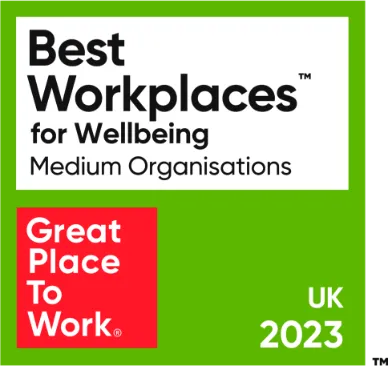Importance of Effective Recruitment
A well-defined recruitment strategy helps streamline the hiring process, saving time and resources for both recruiters and candidates. Clear processes reduce bottlenecks, minimise administrative tasks, and enable faster decision-making, leading to more efficient recruitment outcomes. Emphasising the 3 P’s enhances the likelihood of hiring high-quality candidates who are more likely to succeed in their roles and contribute positively to the organisation. By focusing on the right people and having a purpose-driven approach, recruiters can ensure they are not just filling positions but finding the best talent available.
A structured recruitment strategy promotes consistency and fairness in the hiring process. This helps mitigate biases and ensures all candidates are evaluated fairly based on their skills, experience, and fit for the role and organisation. Understanding the purpose of recruitment allows organisations to align their hiring strategies with broader business objectives. Whether addressing skill gaps, fostering diversity and inclusion, or supporting growth initiatives, the 3 P’s ensure that recruitment efforts contribute meaningfully to organisational success.
Hiring candidates who are well-suited to the organisation’s culture and goals can lead to higher levels of employee engagement, retention and employee performance. When employees feel aligned with the company’s purpose and values, they are more likely to be satisfied in their roles and stay with the organisation for the long term.
Overall, the 3 P’s of recruitment provide a framework for optimising recruitment processes, improving hiring outcomes, and ultimately contributing to the organisation’s success.
People
This refers to the candidates themselves and the recruiters and hiring managers involved in the recruiting strategy. It involves sourcing and attracting suitable candidates who possess the required skills, qualifications, and cultural fit for the organisation. Additionally, it involves having competent recruiters who can effectively assess candidates and make informed hiring decisions.
People bring skills, knowledge, and experience to the organisation. Recruiting the right people ensures the company has the talent to achieve its goals and objectives. Without talented individuals, it’s challenging for an organisation to innovate, grow, and remain competitive. Employees drive organisational success. They are responsible for executing strategies, delivering results, and driving innovation. Hiring the right people increases the likelihood of achieving business objectives and sustaining long-term success.
Recruiting the right people contributes to higher levels of employee engagement and retention but also helps keep employees eager for continuous improvement and higher levels of job satisfaction. When individuals feel valued, challenged, and rewarded in their roles, they are more likely to stay with the organisation and contribute to its growth and success.
Planning
In the context of the 3Ps of recruitment, ‘planning’ typically falls under the category of ‘process’. Planning involves strategically and systematically preparing recruitment activities to achieve the desired hiring outcomes. Planning begins with aligning recruiting efforts with the organisation’s overall strategic goals and objectives. This involves understanding the organisation’s current and future talent needs, identifying key roles to fill, and forecasting staffing requirements based on business objectives and market conditions.

A crucial aspect of planning is determining the most effective sourcing channels to attract qualified candidates. This may involve leveraging job boards, social media platforms, employee referrals, recruiting agencies, or other sourcing methods based on the target candidate pool and industry norms. Planning includes developing recruiting marketing strategies to enhance the employer brand and attract top talent. This may involve creating compelling job advertisements, optimising career pages on the company website, and utilising employer branding initiatives to showcase the organisation’s culture, values, and employee benefits.
Effective planning involves anticipating potential challenges or contingencies that may arise during the recruitment strategy and developing mitigation strategies. This could include strategies for handling unexpected fluctuations in candidate volume, addressing skill shortages, or adapting recruiting tactics in response to changing market conditions.
Process
In the context of the 3 P’s of recruiting, ‘process’ refers to the systematic series of steps and procedures involved in attracting, evaluating, and selecting candidates for job roles within an organisation.
Before initiating the recruitment strategy, organisations typically conduct a thorough job analysis to understand the requirements and responsibilities of the position. This involves identifying key necessary skills, qualifications, and competencies for success in the role. Planning involves determining the recruitment strategy, including sourcing channels, selection methods, and the onboarding process, with the help of human resources specialists.
Once applications are received, the recruitment process involves screening and assessing candidates to determine their suitability for the position. This may include reviewing resumes, conducting preliminary interviews, administering assessments or tests, and conducting background checks. The process aims to shortlist candidates who meet the qualifications and criteria outlined in the job description. Process includes conducting interviews with shortlisted candidates to further evaluate their skills, experience, and fit for the organisation. This may involve multiple rounds of interviews with different stakeholders, including hiring managers, team members, and executives. Selection decisions are made based on the candidate’s exceptional performance during interviews, CV and alignment with the organisation’s values, culture, and goals, which can significantly impact the functioning and operation of an organisation.
Factors for Effective Recruitment
Effective recruitment relies on several key factors to ensure the right candidates are attracted, evaluated, and selected for job roles within an organisation. Building and maintaining a positive employer brand helps attract top talent to the organisation. A strong employer brand communicates the company’s values, culture, and reputation as an employer of choice, making it more appealing to prospective candidates.
Having a streamlined and efficient recruitment strategy is critical for attracting and retaining top talent. A well-defined process with clear steps, timelines, and communication ensures a positive candidate experience and reduces the time-to-fill vacancies. Implementing diversity and inclusion initiatives in recruitment efforts helps ensure a diverse candidate pool and fosters a more inclusive workplace culture and a positive work environment. Proactively seeking candidates from diverse backgrounds and eliminating bias in the recruitment process promotes equal opportunities for all candidates.
Work With Olive Recruit – An Experienced Recruitment Company
With years of industry experience and a commitment to excellence, we specialise in matching top-tier candidates with leading companies across various sectors.
Our comprehensive approach to talent acquisition ensures that every placement is tailored to meet the unique needs and aspirations of both candidates and clients. Whether you’re seeking your next career move or looking to hire exceptional talent, trust Olive Recruit to deliver exceptional results.
Contact us to explore our customised recruiting solutions and, unlock the path to success, and take the first step towards achieving your goals today!
FAQs
How Do The 3Ps of Recruitment Impact Hiring Success?
- Each of the 3Ps plays a critical role in ensuring efficient recruiting. ‘People’ involves finding and attracting top talent that aligns with the organisation’s culture and goals. ‘Process’ entails designing efficient and fair procedures for sourcing, screening, and selecting candidates. ‘Planning’ involves leveraging technology and platforms such as applicant tracking systems (ATS), job boards, and social media to streamline recruitment tasks and reach a wider pool of candidates.
How Does Prioritising the 3Ps of Recruitment Contribute to Long-term Organisational Success?
- Prioritising the 3Ps of recruitment fosters a strategic approach to talent acquisition, which directly impacts the quality of hires and, consequently, organisational performance. By focusing on attracting and retaining top talent, implementing efficient recruiting strategies, and leveraging appropriate technologies and platforms, companies can build strong teams capable of driving innovation, achieving business objectives, and maintaining a competitive edge in the market.
How Do the 3Ps of Recruitment Align with Overall Business Objectives and Strategies?
- The alignment of the 3Ps with business objectives is crucial for ensuring that recruiting efforts support organisational goals. By focusing on the right ‘people’ who possess the skills, experience, and values, establishing an efficient ‘process’ to streamline hiring, and leveraging appropriate ‘planning’ to reach and engage candidates effectively, recruiting activities directly contribute to building a workforce that drives business growth, enhances competitiveness, and sustains long-term success.







